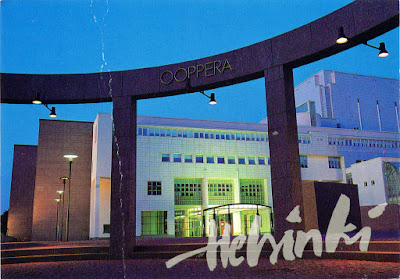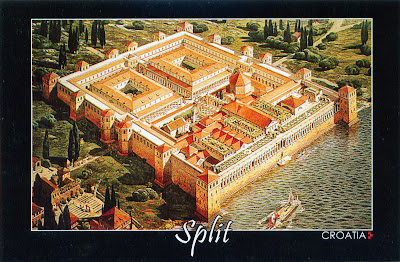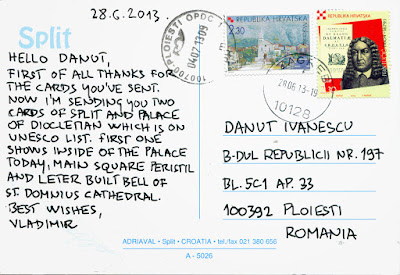Posted on 21.09.2012 and completed on 10.04.2013 Only two UNESCO World Heritage Sites are located in
Nepal, but if we consider the fact that one of them,
Kathmandu Valley, has at least 130 important monuments, and occupies the entire region considered Nepal Proper by the people who live outside the valley, is not at all less. The site is composed of seven different Monument Zones: the centers of the three primary cities (
Kathmandu,
Patan and
Bhaktapur), the two most important
Buddhiststupas (
Swayambhunath and
Boudhanath), and two famous Hindu shrines (
Pashupatinath Temple and
Changu Narayan). The centers of the three primary cities are actually the Durbar Squares of these cities, belonging to the three kingdoms situated there before the
Unification of Nepal, made by
King Prithvi Narayan Shah in the mid-18th century.
Durbar Square is the generic name used to describe plazas opposite old royal palaces in Nepal,
durbar being a
Persian term, which initial mean the Shah's noble court.
On the first postcard appears
Bhaktapur Durbar Square, located, of course, in the town of Bhaktapur (literally meaning "The Town of Devotees", also known as Khwopa or Bhadgaon), which lies 13 km east of Kathmandu, on the old trade route to
Tibet, and was the capital of Nepal during the
Malla Kingdom, until the second half of the 15th century. The complex consists of four distinct square (Durbar Square, Taumadhi Square, Dattatreya Square and Pottery Square), but is known as the
Bhaktapur Durbar Square. The actual Durbar Square houses the 55 Windows Palace, begun by King
Jitamitra Malla and completed by his son, King
Bhupatindra Malla. Home to royalty until 1769, now it is the National Gallery (in the first postcard) and hosts ancient and medieval paintings belonging to Hindu and Buddhist schools and depicting
Tantrism of various periods and descriptions.
In right of the first postcard can be seen the Golden Gate (
Sun Dhoka), actually made of brass, which is the entrance to the main courtyard of the palace and is considered one of the most important pieces of art in the whole Kathmandu Valley. Named Mulchok Court, the main courtyard is home of a temple dedicated to the goddess
Taleju Bhawani and includes shrines to both the Taleju Bhawani and Kumari. Entrance to the temple is restricted to Hindus and the living goddess can’t be photographed. On the left, in shadow, on the top of a stone pillar standing on a lotus pedestal, is a golden statue of Bhupatindra Malla under the shade of Chudamani, a golden umbrella, in a praying position and facing the Taleju Temple.
In Bhaktapur Durbar Square are many other beautiful buildings, erected during three generations of kings. And what is seen today is just what remained after the earthquake of 1934, which destroyed or damaged almost all the palaces and temples in Durbar Square. Originally, there were 99 courtyards attached to this place, but now only 6 remained.
In the second postcard is the temple of Dattatraya, as old as the 55 Windows Palace. Consecrated by
King Yakshya Malla in 1427 and subsequently repaired and renovated by
King Vishwa Malla in 1458, this three-storey temple was built out of the trunk of a single tree. It is raised well above the ground on its base, the sides of which are carved with erotic scenes. The front section, which was a later addition to the temple, stands almost separate, the entrance being guarded by two Malla wrestlers.
Added on 17.01.2013Known also as Basantapur Durbar Square, Kathmandu Durbar Square is named in present Hanuman Dhoka, due to the statue of
Hanuman, the monkey devotee of
Lord Ram. The first royal palaces were built here in the 3rd century, but they undergone repeated renovations so nothing remained from that period.
Gunakamadev build also in the 8th century his palaces in this Durbar Square and from here ruled the
Malla and Shah kings until 1896. Even today the square is the center of important royal events, like the coronation of
King Birendra Bir Bikram Shah in 1975 and
King Gyanendra Bir Bikram Shah in 2001.
This complex of palaces, temples, shrines, statues and courtyards, built between the 15th and 18th centuries, is a queer assortment of the old and the new. To try to write about each building, would be a risky endeavor, so I will specify only two things. Here is located the
Kasthamandap temple, the Valley's oldest building, which gave the name of the city and is said that was created from the wood of a single tree. Into the Old Royal Palace's wall is a 17th-century stone inscription written in 15 languages; it is believed that milk will flow from the spout below if anyone deciphers the entire inscription.
Added on 09.07.2013Located on the banks of the
Bagmati River,
Pashupatinath Temple is one of the most significant
Hindu temples of
Lord Shiva in the world, serving as the seat of the national deity, Lord Pashupatinath. It is one of the 275
Paadal Petra Sthalams (Holy Abodes of Shiva on the continent), and over the past times, only born Hindus were allowed to enter the temple.
Kotirudra Samhita, Chapter 11 on the
Shivalingas of the North, in
Shiva Purana mentions this Shivalinga as the bestower of all wishes. The priests of Pashaputinath are called
Bhattas and the chief priest is called
Mool Bhatt or
Raval.
Read more »

















































